Snakes have always caught attention due to how stunning they look. As we learn more about their lives in many previous blogs, one question arises: do snakes eat cockroaches?
Yes, It’s true that certain snakes eat cockroaches, but the predator-prey interaction is deeper than that. The nature of this connection depends on many variables, including the snake’s species, size, environment, and even the cockroach’s exact species.
To better understand this exchange, let’s go to the world of snakes, where every meal is a matter of life and death. It should be interesting to learn more about snakes, their diets, and cockroaches’ function in their wild and captive environments.
Understanding Snake Diet
Cockroaches are common nighttime insects that are known for being very tough. They are a part of many ecosystems and can be eaten by many predators, including snakes. Their exoskeletons provide the nutritional fiber that is helpful to a snake’s digestion, and they are nutrient-packed. Cockroaches, especially dubia roaches, are a common staple diet item for captive snakes.
So, snakes eat mammals and birds and insects like cockroaches, making their diets very complicated. This wide range of edibles reflects the multifaceted function of these scaly carnivores as regulators of ecosystems, predators, and prey.
Types of Snakes That Eat Insects
The rich and varied world of snakes contains a wealth of information about the unique behaviors and diets of individual species. Although snakes have been known for hunting huge animals, certain species have a clear preference for insects.
Garter Snakes (Thamnophis spp.)
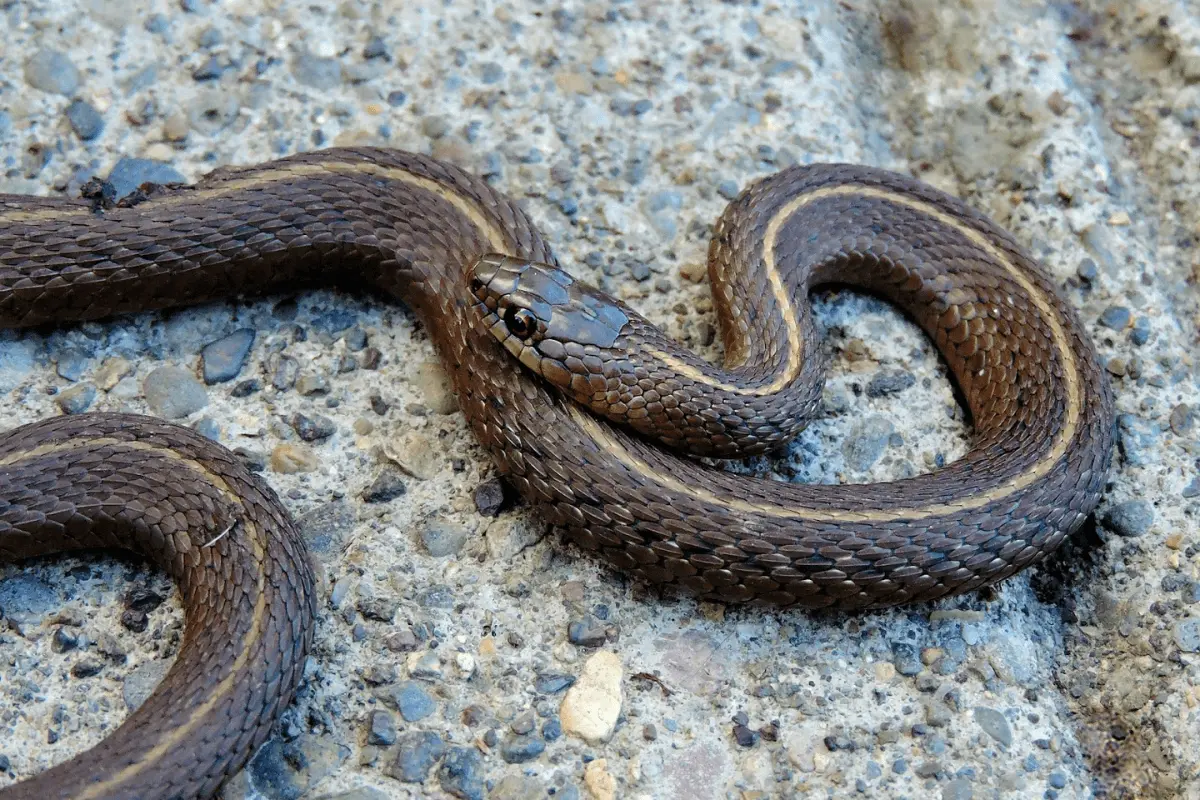
Garter snakes get their name from the lines on their bodies that look like garters. They are a fascinating species with a wide range of food preferences. They have a varied diet, including aquatic and terrestrial creatures, including insects. Insects with soft bodies, like earthworms and slugs, are common food for garter snakes, especially young ones.
Because of their adaptability, they may live in a variety of environments, such as grasslands, marshes, or even your own garden, guaranteeing a steady supply of insects that make up a substantial portion of their diet.
Ringneck snakes (Diadophis Punctatus)

The ringneck snake is a small species that can be identified by its bright, unbroken ‘necklace’ and its brightly colored belly. Because they are small and shy, they prefer to eat soft, small animals. Their diet consists primarily of insects and other invertebrates, including slugs, earthworms, and small amphibians. Ringneck snakes catch their food by squeezing it, which is a rare way for snakes that eat insects to hunt.
Eastern Worm Snake (Carphophis amoenus)
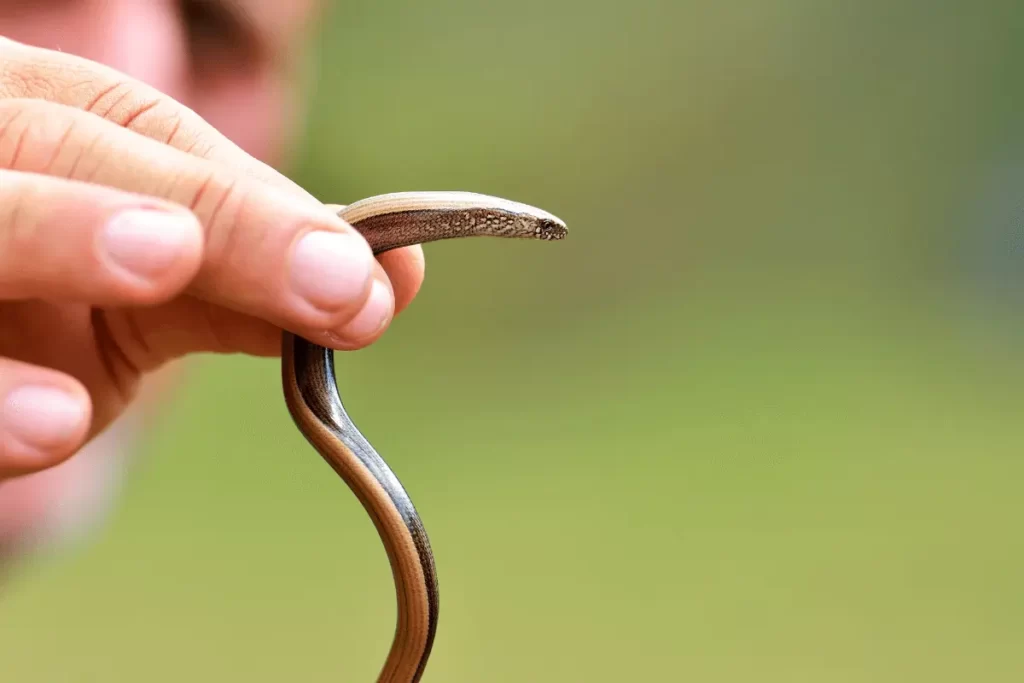
True to their name, Eastern Worm Snakes are masters of trickery. Because they are small and have shiny brown or pink skin, they are often confused for earthworms. These secretive animals spend much of their lives underground, feeding on small, soft-bodied invertebrates in humid forests. Although earthworms are their main food source, they have been observed eating insects.
Brown Snakes (Storeria spp.)
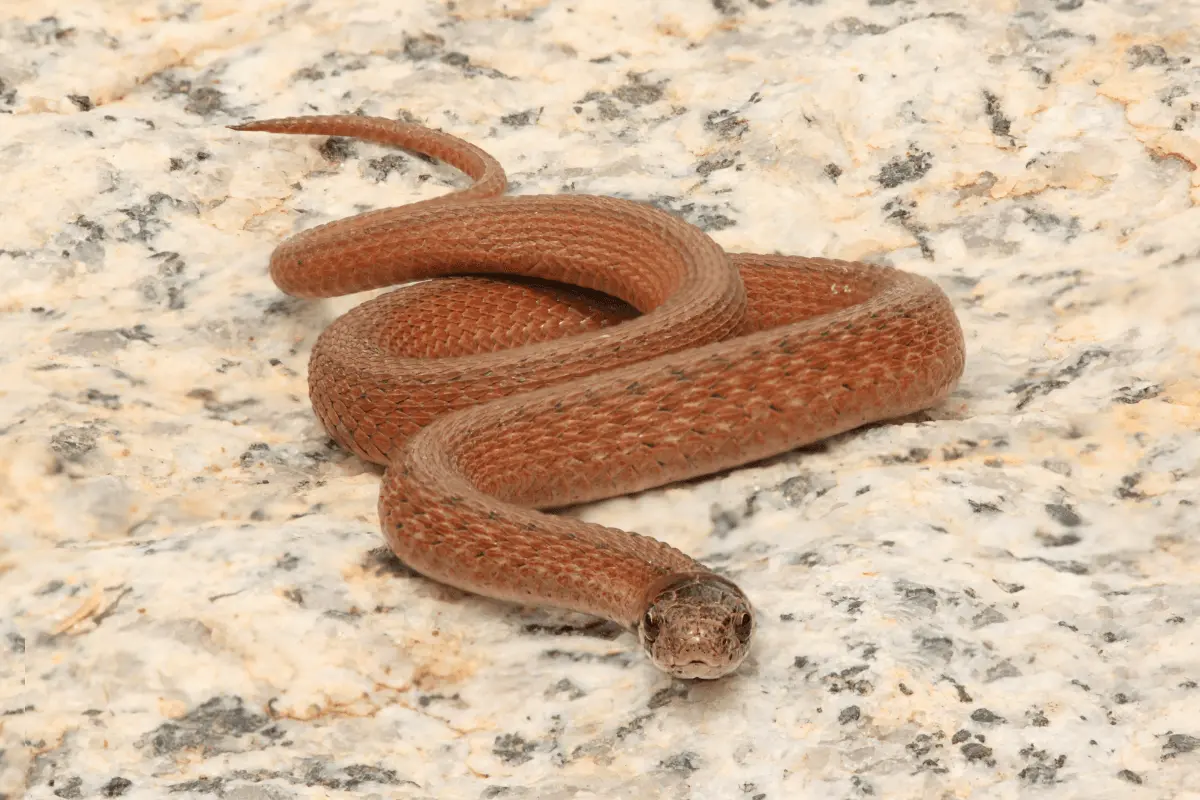
Brown snakes are modest, small creatures that move through leaf litter and loose dirt. Their natural coloring makes them nearly invisible to both predators and prey. Small snakes like this favor a diet heavy on soft-bodied invertebrates, especially insects like beetle larvae, caterpillars, and ant queens. They are more effective insect predators because they are nocturnal; many insects are most active after dark.
Rough Green Snake (Opheodrys Aestivus)
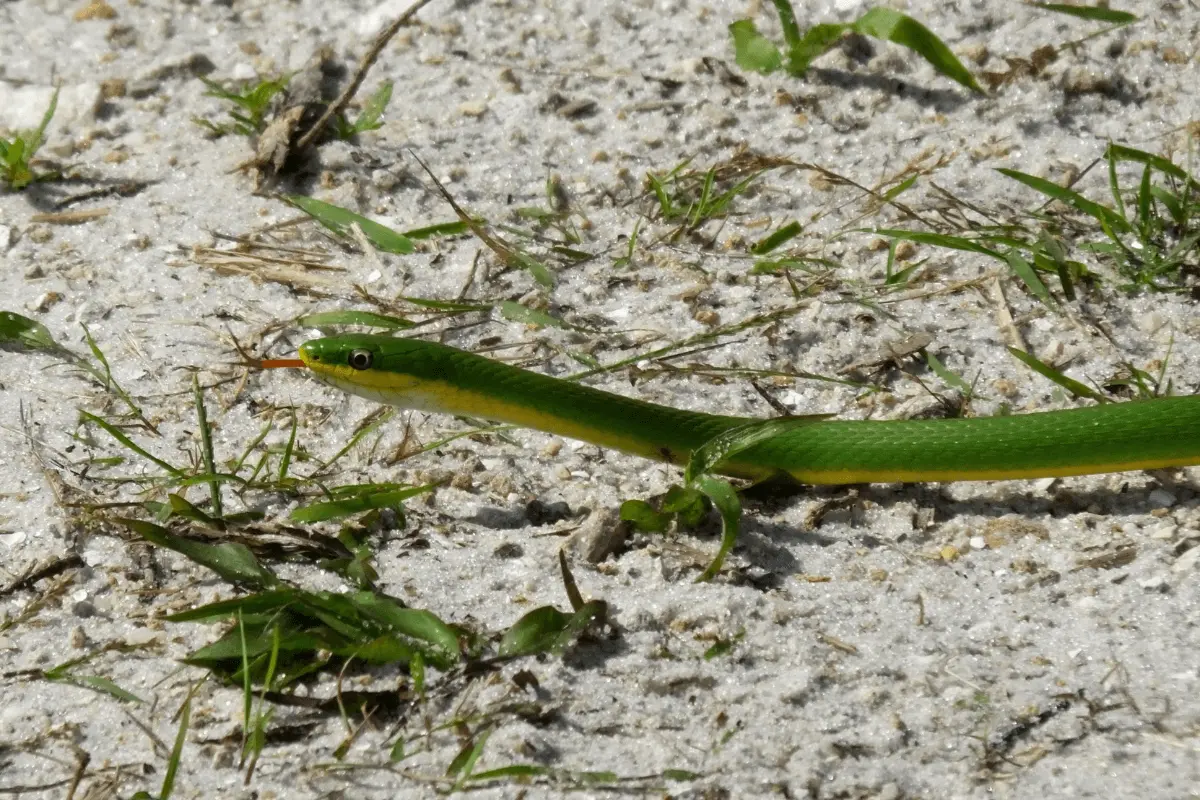
Rough Green Snakes are masters of camouflage in the trees thanks to their bright, green scales. Since they spend most of their time wrapped in leaves, these skinny snakes have changed their diets to match their green homes. Insects, such as spiders, moth larvae, and other arthropods, make up the bulk of their diet. Their ability to move carefully and slowly, combined with their excellent hiding, makes them formidable predators of insects.
Red-Bellied Snake (Storeria Occipitomaculata)
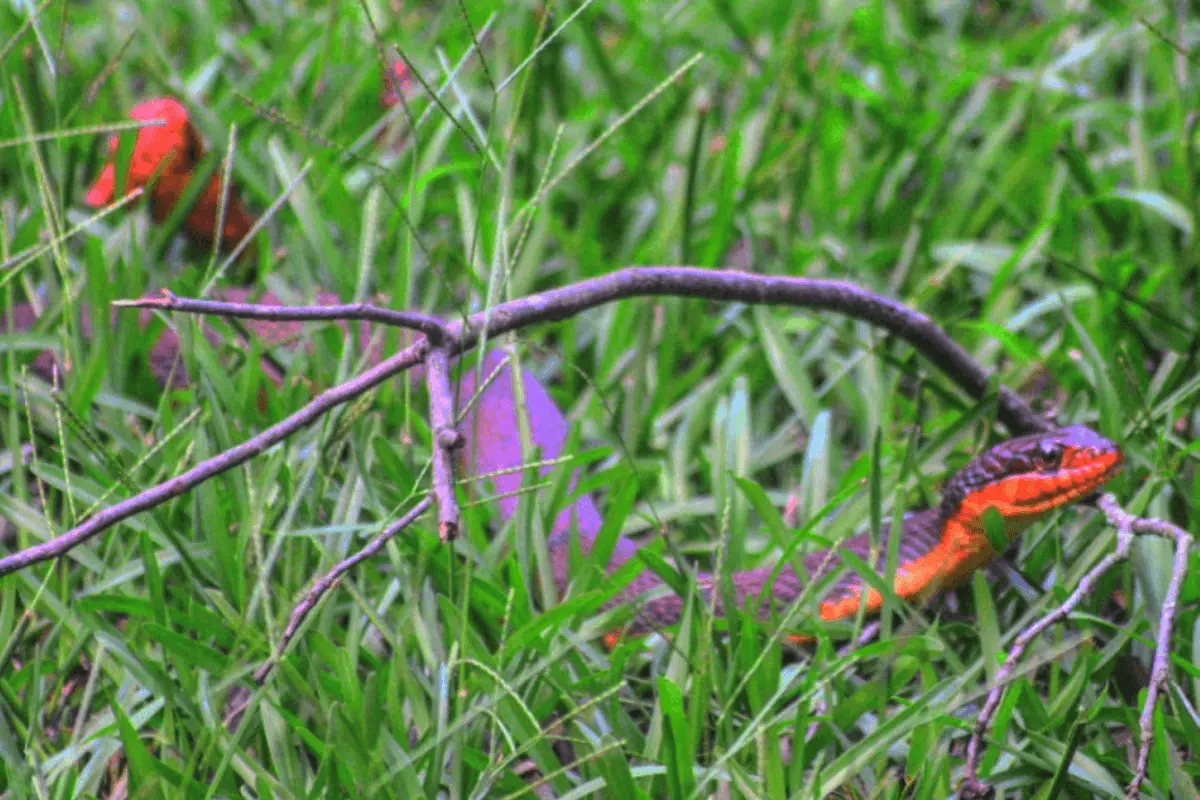
The Red-bellied Snake is a small North American species that lives in damp, wooded areas and has a striking red belly. These snakes frequently hunt under fallen leaves, where they find a veritable feast of insects and other invertebrates. Their food consists largely of insects, particularly beetles and their larvae.
Smooth Green Snake (Opheodrys vernalis)
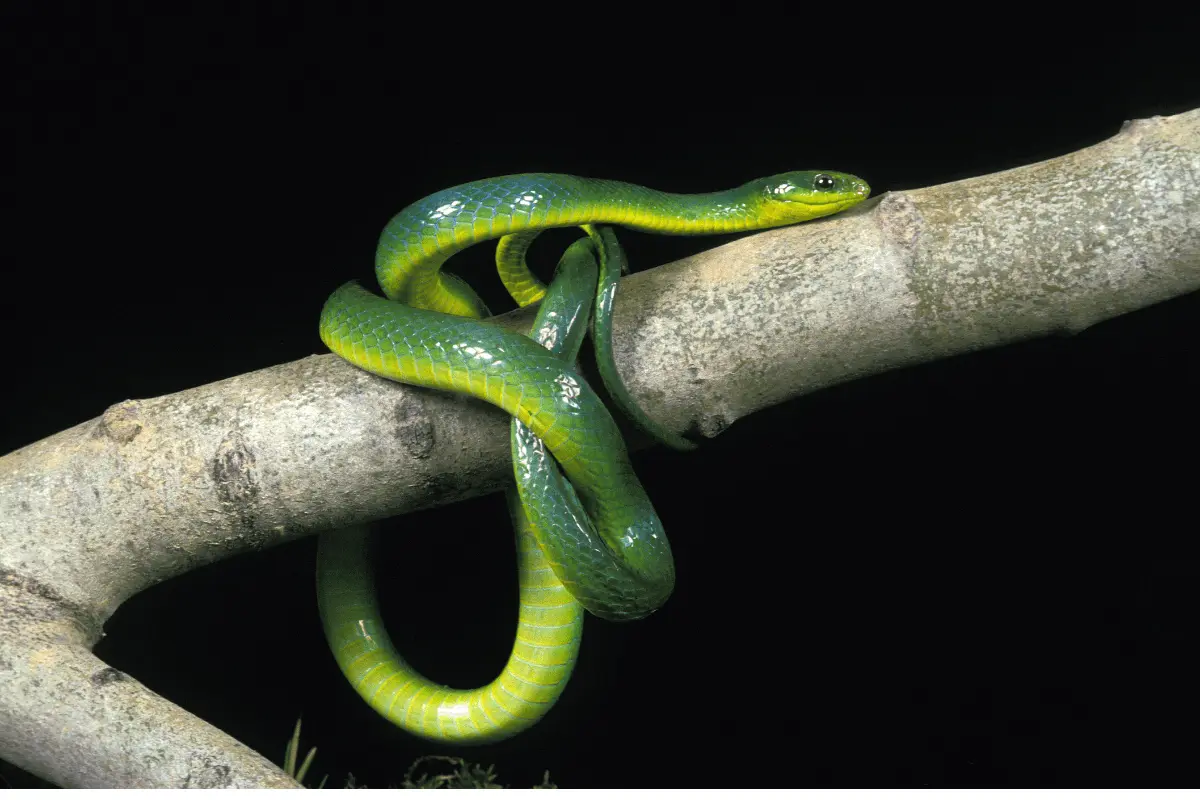
The Smooth Green Snake, a close relative of the Rough Green Snake, is a bright spot in the world of snakes, which is mostly brown and grey. The insects they eat make up a significant percentage of their diet, and they prefer to live in grassy, open forests. Moths, spiders, and other soft-bodied insects fall prey to these skilled hunters. Extremely patient, they wait in complete silence, camouflaged by the surrounding vegetation, for an opportunity to pounce on an unsuspecting victim.
Black Racer (Coluber constrictor)
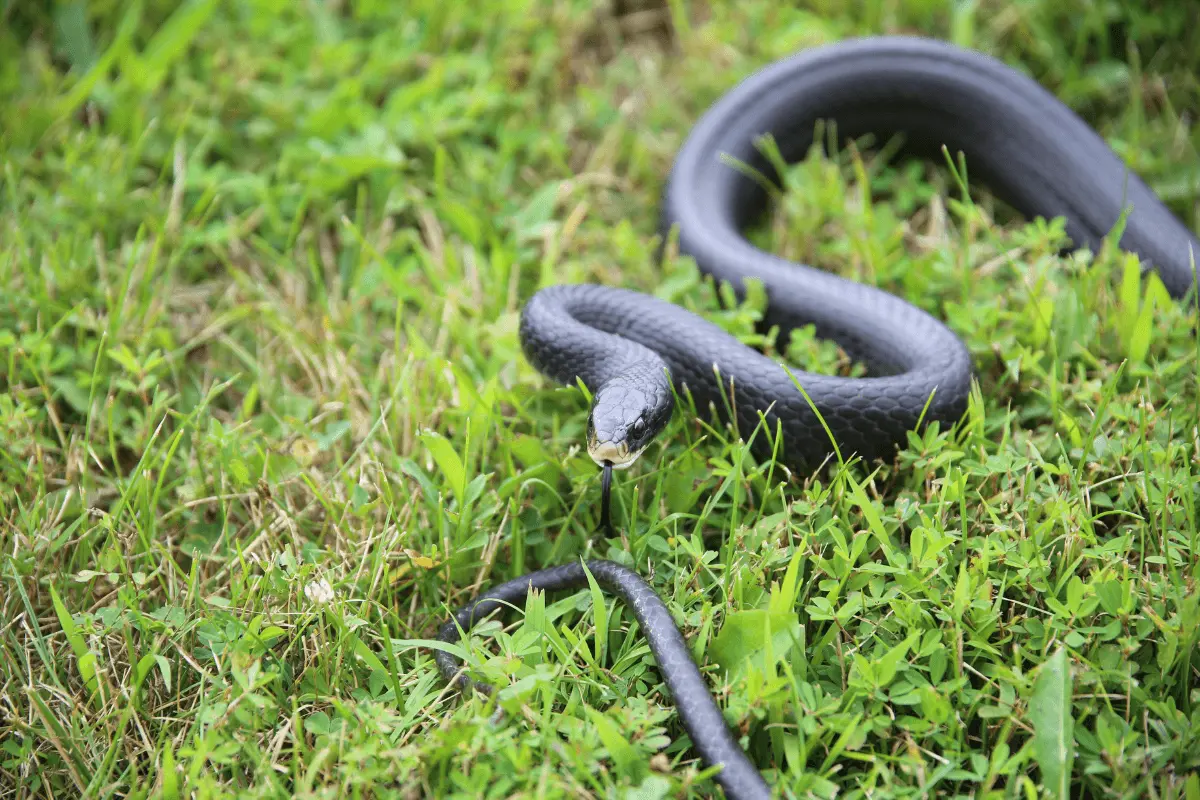
The Black Racer snake is well-known for its swiftness and hunting prowess and is a common species found in many parts of the world. Even though they are known to eat a wide range of animals, like rodents, amphibians, and even other snakes, their young tend to prefer insects. As they develop their hunting skills, young racers focus on smaller prey, such as soft-bodied insects like caterpillars and beetles.
The Crowned Snake (Tantilla Relicta)
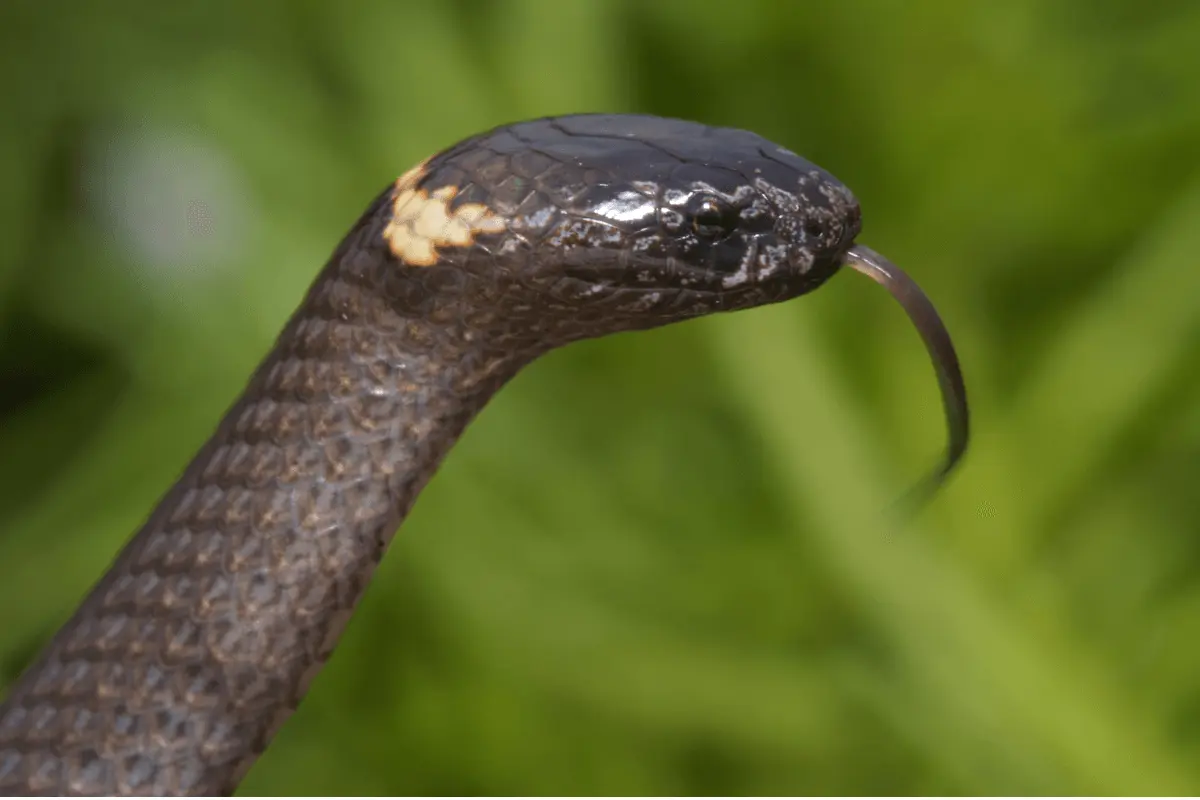
Crowned Snakes are small yet tenacious, and their heads are crowned with a different color, making them easy to spot. These sly reptiles take advantage of their fossorial lifestyle by feeding largely on centipedes and beetle larvae. They are a remarkable example of predatory effectiveness due to their small size; they are able to control and swallow relatively large invertebrates.
All of these insectivorous snakes are living proof that no living thing is unnecessary to its ecosystem, no matter its size or where it lives.
Snakes and Cockroaches
The predator-prey relationship between snakes and cockroaches is complex and fascinating. The principles of the food web control this interaction, an essential parallel in the larger tale of nature.
Snakes of all sizes and shapes enjoy eating cockroaches, which serve as a symbol for resilience and flexibility. They are easy to find and very small, making them an ideal meal for snakes of all sizes. Snakes get the energy they need to grow and reproduce by eating cockroaches, which are full of protein and carbs.
At the same time, cockroaches often get away from these predatory snakes because they are sneaky and come out at night. This keeps the cockroach population in balance. This relationship is a perfect example of nature’s most important rule, “survival of the fittest,” because the survival, growth, and development of both species depend on each other.
So, the connection between snakes and cockroaches is a complex cycle of predation and survival. It shows the delicate balance and interdependence that exist in nature’s vast ecosystem.
Cockroaches As a Food Source
The cockroach, long considered a pest, has become a vital food source for various snake species. These insects provide nourishment for their snake predators, adding another link to the food chain.

Smaller snakes survive on cockroaches because they are common and easy to catch. The proteins, carbohydrates, and lipids found in snakes’ bodies play a key role to the snake’s ability to grow, develop, and reproduce. Also, the cockroaches’ tough exoskeletons help the snake eat, which is good for its health.
Also, cockroaches, especially dubia roaches, are a good choice for controlled settings like terrariums because they are easy to breed, have a lot of nutrients, and are less likely to carry parasites. Cockroaches show how nature is full of amazing cycles, where even a small creature can be an important part of a bigger biological symphony that supports life and its constant flow.
Why Snakes Would Choose Cockroaches?
Pros of Snakes Choosing Cockroaches as Prey
Ubiquity: Cockroaches are easy for snakes to get to because they are found in many places. Because of their plethora, there will always be enough food to eat.
Nutrition: Cockroaches have a good mix of proteins, carbohydrates, and fats that snakes need to grow, stay healthy, and have babies.
Size of Prey: Since cockroaches are small, snakes, especially younger or smaller ones, can easily eat them without having to use a lot of energy or risk getting hurt.
Ease of Capturing: Cockroaches are quick, but they aren’t too hard to catch and control, so snakes that hunt them have a high success rate.
In Captivity: In captivity, roaches are less likely to carry bugs than other feeders, which makes it less likely that pet snakes will get sick.
Cons of Snakes Choosing Cockroaches as Prey
Escape Artists: Cockroaches may be easy to capture, but they might be tricky to catch on occasion because they are experts at evasion.
Insecticide Exposure: If a snake eats a cockroach that has been exposed to insecticides, the snake might get sick.
Insufficient Meal: For larger snake species, a cockroach is not enough food, so they have to eat bigger animals.
Hard shell: The hard shell of some cockroach species may cause snakes, especially smaller ones, to choke or have trouble digesting.
So, while cockroaches can be a good food source for some snakes, this choice has many different effects and shows how complicated predator-prey relationships can be.
Pet Snakes and Cockroaches
Snakes as pets require knowledge of their natural habits and diets. Cockroaches are an important food source for a great deal of wildlife, especially for smaller species. They are commonly fed to pet snakes, especially young ones, as a source of nutrition in the home.
Due to its high nutrient content, the cockroach can help with good growth and development. The health of the snake depends on the insects it eats. Therefore, it’s important to check that they haven’t been exposed to any chemicals that could be hazardous.
Cockroaches in a Snake’s Habitat
The warm and humid conditions in a snake’s terrarium can attract cockroaches. They might give your snake an accidental snack, but they can also be dangerous. Your pet snake is at risk of getting a sickness or parasite from being exposed to cockroaches. So, it’s important to keep your home clean and safe to prevent cockroach attacks.
Feeding Cockroaches to Pet Snakes
If done in a responsible way, giving bugs to pet snakes can be good for them. Reptile keepers like species like the dubia roach due to the latter’s high nutrient content and ease of reproduction. But it’s important to feed pesticide- and parasite-free food to roaches that were raised in captivity. The size and age of the snake should determine the size and frequency of the portions, and the roaches should be the right size to keep the snake from dying.
Safety Concerns with Cockroaches
Cockroaches are known for being tough and able to survive in many different places, including, unfortunately, snake enclosures. If you don’t stop them, they can quickly grow into a big problem. This not only upsets the controlled environment of the cage but also makes it more likely that diseases will spread.
Possible Health Risks
Many different types of bacteria, viruses, and fungi can be spread by cockroaches. Salmonella, a dangerous bacterium that may cause severe digestive disorders in snakes, has been linked to its spread. In addition, snakes may be toxic and exposed to insecticides if they consume roaches that have been infected.
Parasites and Infections
Cockroaches not only spread disease.But also external and internal parasites to the snake’s environment. Once mites and ticks are there, they can be very hard to eliminate. In addition, snakes might get weight loss, lethargy, and decreased appetite by eating infected cockroaches, which carry internal parasites like worms. To protect the health of pet snakes, it is very important to get cockroaches from safe, trusted breeders.
Conclusion
The connection between snakes and cockroaches is an interesting example of how survival, adaptation, and balance play out in nature. Even though these animals have very different identities. They are all connected in the food web in a way that looks like a dance. Snakes get a lot of their food from cockroaches, which might not look like much but are a good source of protein.
This pairing is not risk-free, though. Including cockroaches in a pet snake’s diet necessitates careful procurement and thoughtful practices. Therefore, it is essential that we recognize the importance of maintaining healthy, balanced ecosystems, whether at home or in the wild.

